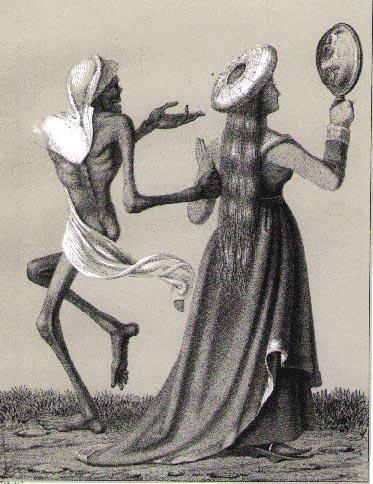Paul Laffoley

I love Laffoley's work and he now has an archive online.
Subject: The Natural Octave of Spatiality and Temporality
Symbol Evocation: The Geometric Force of the Tension between Fate and Free Will
Comments: The rationalized dimensionality above and below the Euclidean third dimension (or the so-called "consensus" reality) was the work of the geometer and astronomer Carl Fredrich Gauss (1777-1855), who conceived of a higher-dimensional analytic geometry, and the mathematician-physicist Georg Friedrich Bernhard Riemann (1826-1866), who as a student was influenced by Gauss. Riemann advanced the thought by developing an N-dimensional manifold with a metric (a rule for assigning lengths to paths), which meant you could now consider force or energy as a consequence of geometry, thus making the laws of nature seem simpler when viewed from the context of higher dimensional space.
From the mid-Nineteenth Century until now, dimensionality has gradually replaced the traditional concept of Fate-- the three goddesses who determine the course of human life: Cloth (the spinner- who spins the thread of life), Lachesis (the disposer of lots-who determines the length of life) and Atropos (the inflexible- who cuts off the thread of life).____________________________
I
Rationalized dimensionality above and below the third dimensional realm – the dimension that has been defined as “consensus reality” – is the work of the Geometer and Astronomer Carl Friedrich Gauss [1777-1855], who conceived of a higher-dimensional analytic geometry, and the mathematician-physicist Georg Friedrich Bernhard Riemann [1826-1866], who as a student was influenced by Gauss. From 300 B.C.E. to 1854, the third dimension of the ancient Greek geometer Euclid held sway over the spatial imaginations of most of the population of the western world. Even a mind as brilliant as that possessed by Sir Isaac Newton [1642-1727] was not immune. The sense of the misplaced absolutism concerning space and time was never challenged, with the exception of G.W. Leibniz [1646-1716], until the beginning of the nineteenth century. Then a number of mathematicians began to voice a new direction such as Nikolay Ivanvich Lobachevsky [1792-1856] and Janos Bolyai [ ]. But it was ultimately Riemann who advanced the concept of dimensionality into an n-dimensional manifold with a metric so as to establish a quantitative rule for assigning lengths to paths. This now meant that one could consider force or energy to be consequence of geometry, making the laws of nature seem simpler when viewed from the context of a more comprehensive dimensional space. The apotheosis of his thinking resulted in the revolution in physics initiated in the early twentieth century by Albert Einstein [1879-1955] and continues to influence contemporary physics although modified into quantum geometry.



No comments:
Post a Comment